
10 Steps Essential in Your Activation Funnel? Best Guide

by
Wiktoria Slowikowska
Nov 13, 2024
Identify and convert your most valuable users
Sign Up
Turning a new user into an active, loyal customer is essential to the growth and success of your business. The key to this transformation lies in an effective activation funnel.
The activation funnel is the series of steps that guide a user from their first interaction with your product all the way to realizing its full value. It’s about making sure users see and feel the value of your product as quickly as possible, so they get hooked and become long-term customers.
But what exactly does this process involve? Let’s break it down into the essential steps that every SaaS business should focus on in their activation funnel.
1. Create a Smooth First Experience
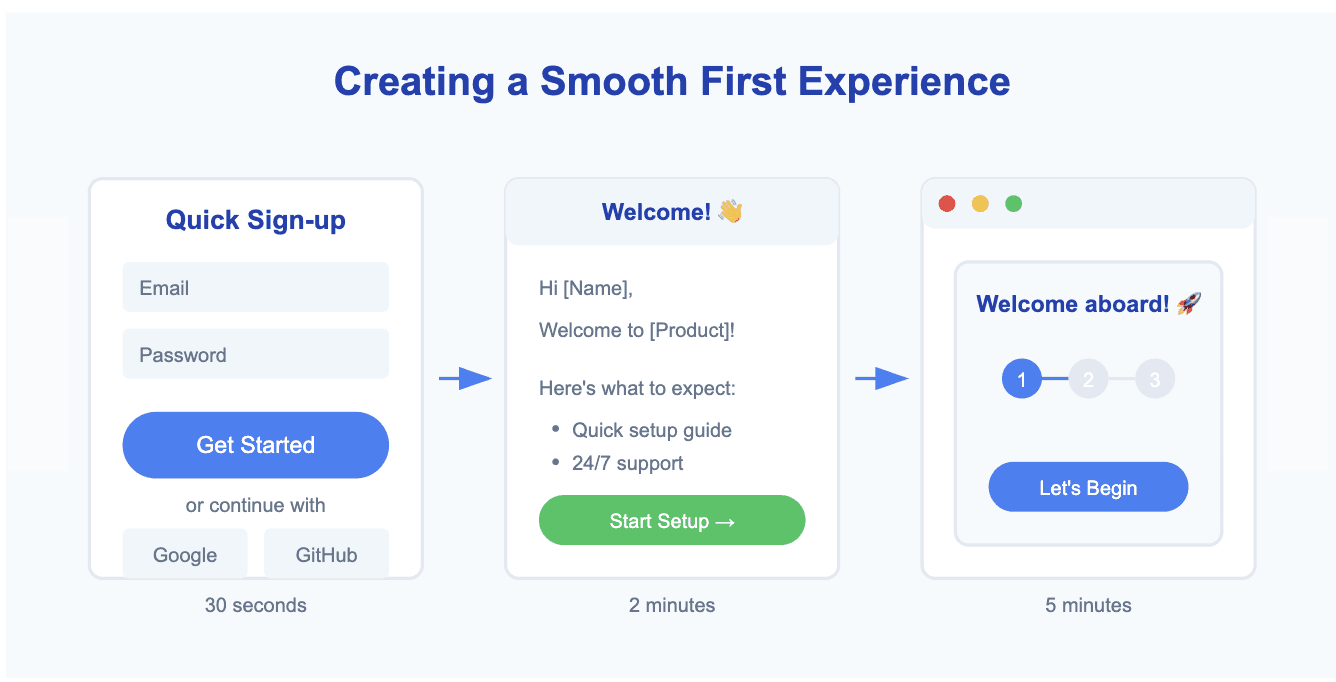
When a new user signs up, the first impression matters the most. If the first experience isn’t smooth or welcoming, it’s easy for users to abandon the product.
What You Should Do:
Ensure that the sign-up process is simple and quick. Avoid overwhelming the user with too many fields or unnecessary steps. After they sign up, offer a warm welcome with a friendly email or in-app message. This makes them feel valued and reassures them they’re in the right place.
Pro Tip: An effective welcome message should briefly outline what the user can expect and give them a clear next step.
2. Onboard Users with a Clear, Step-by-Step Guide
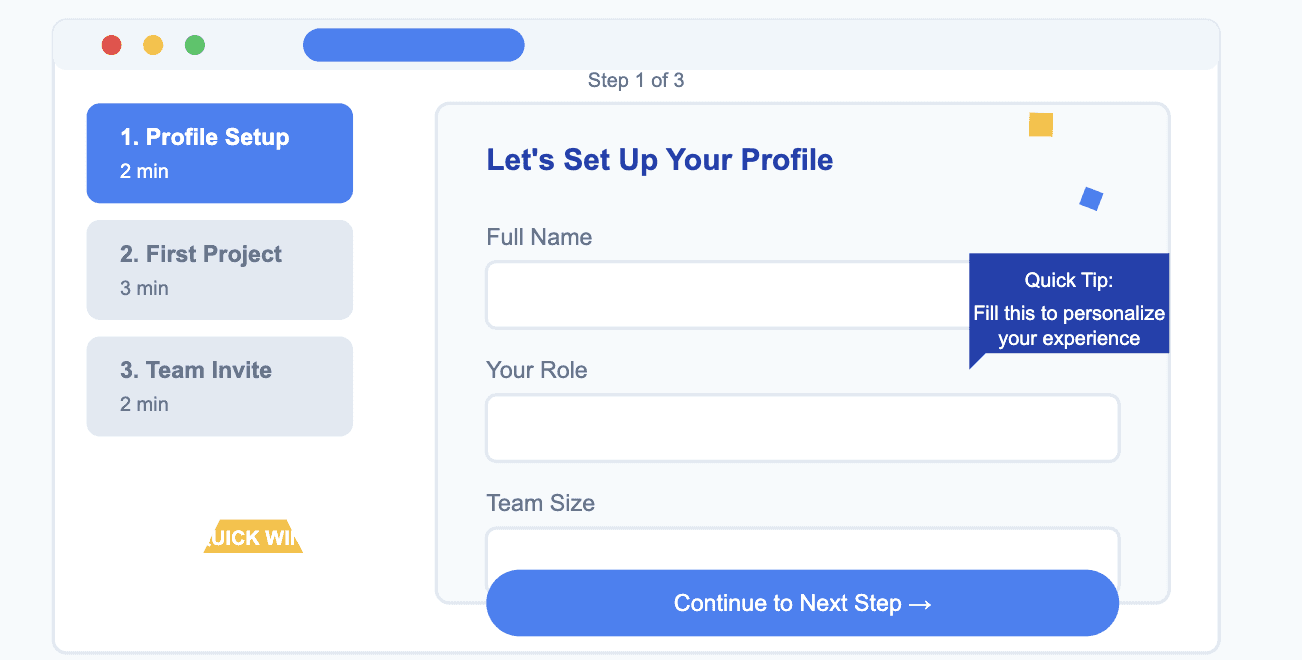
Once users sign up, they need help to understand the product and how to get started. A well-designed onboarding process is crucial for guiding them through their first steps without frustration.
What You Should Do:
Use an interactive walkthrough or guided tour that introduces users to your key features. Make sure the interface is easy to navigate and provides clear directions. Show them how to set up their account, complete basic tasks, and use the product's most essential functions.
Pro Tip: Keep onboarding short and focused—don’t overwhelm them with everything at once. Help them achieve a small but significant win early on, like completing their profile or creating their first project.
3. Highlight the Core Value Proposition
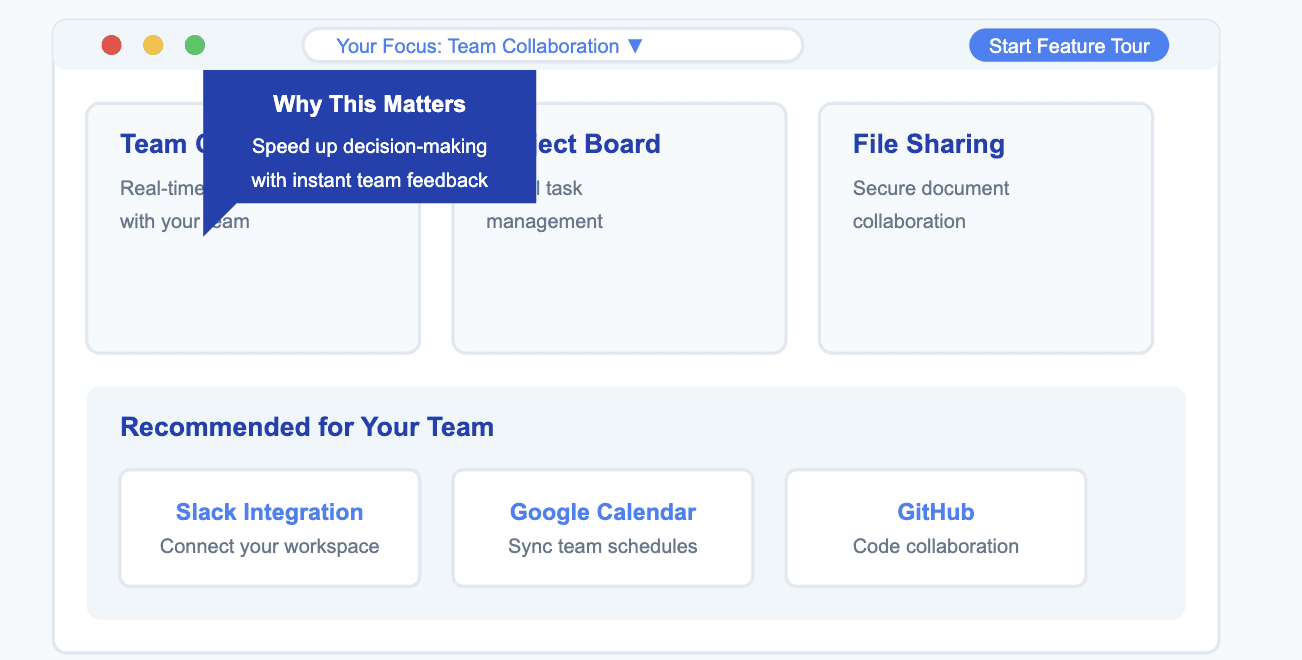
At this stage, users should understand the value your product offers. This is where you highlight the core features that make your product unique and beneficial for their needs.
What You Should Do:
Guide users to the product’s most important features. Use in-app tooltips or pop-up messages to point them toward key actions. Make sure you explain why these features matter and how they can benefit the user.
Pro Tip: Personalize the experience by showing features that align with the user’s specific use case or goals. For instance, if they’re in a business setting, focus on features that enhance productivity or team collaboration.
4. Prompt the User to Take Action
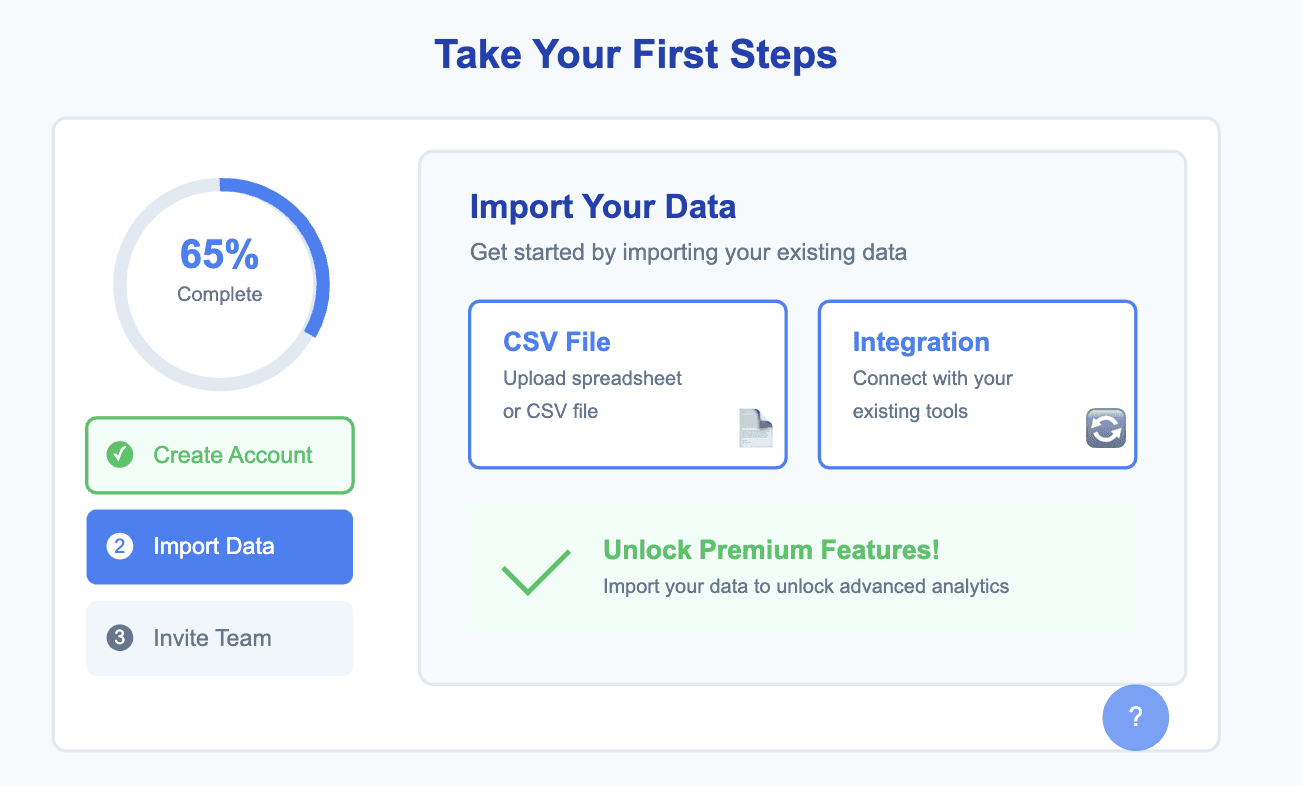
After guiding them through the basics, it’s time to encourage users to take action. The goal here is to get users interacting with the product in a meaningful way that demonstrates its true value.
What You Should Do:
Provide users with clear calls-to-action (CTAs) that prompt them to do something useful—whether it’s adding data, completing a task, or exploring a feature. The idea is to encourage them to engage with the product actively.
Pro Tip: Make the action simple and easy to complete, and consider offering a small incentive or reward to motivate users to take that next step. For example, "Complete your profile to unlock [feature]" or "Try this task to see immediate results."
5. Provide Ongoing Support and Help
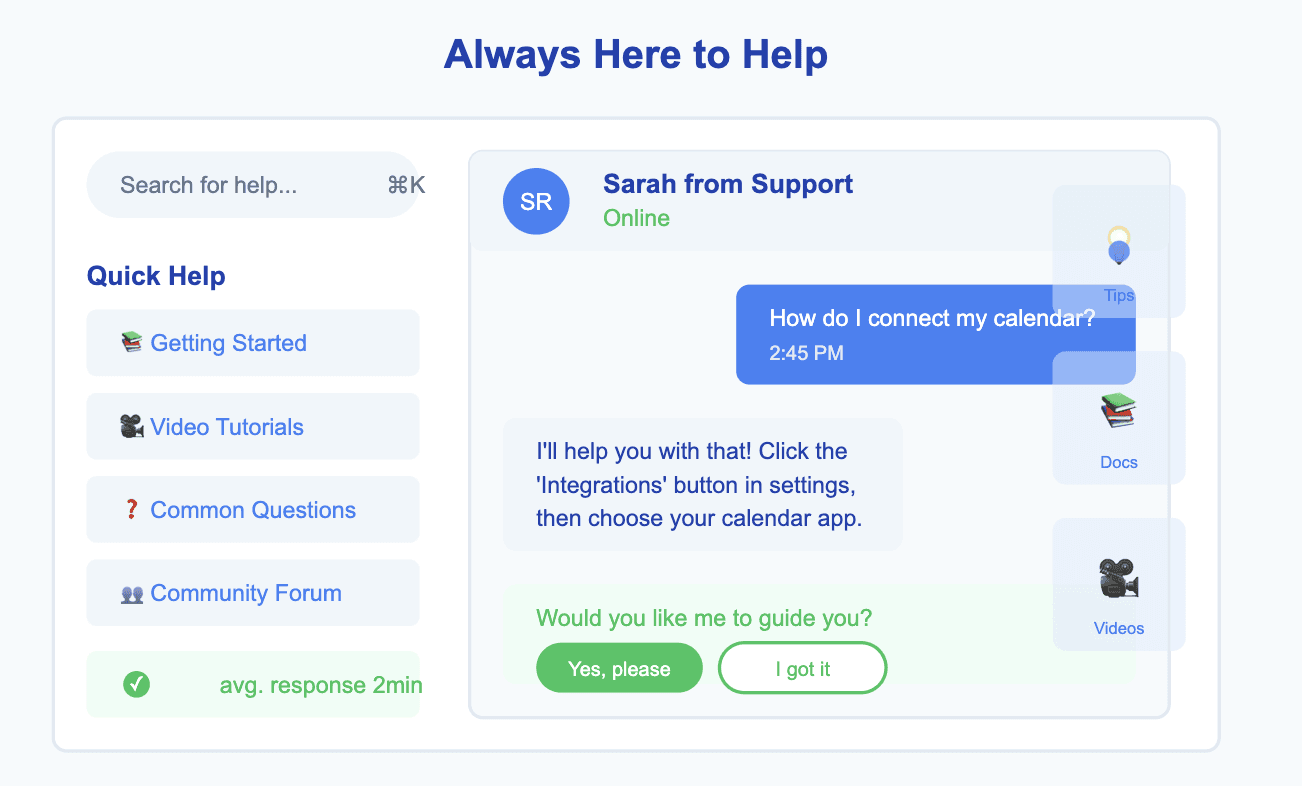
Not every user will immediately understand how to use every feature or overcome hurdles in the product. That’s why it’s crucial to offer support during the activation phase.
What You Should Do:
Make sure users can easily find help when they need it. This can be through in-app chat support, an accessible knowledge base, or tooltips that provide additional guidance. Aim to make users feel supported and confident as they learn to use your product.
Pro Tip: Offer live chat support to answer any questions users have in real time. A responsive customer support team makes users feel valued and less likely to give up on your product.
6. Show Immediate Value with Clear Benefits
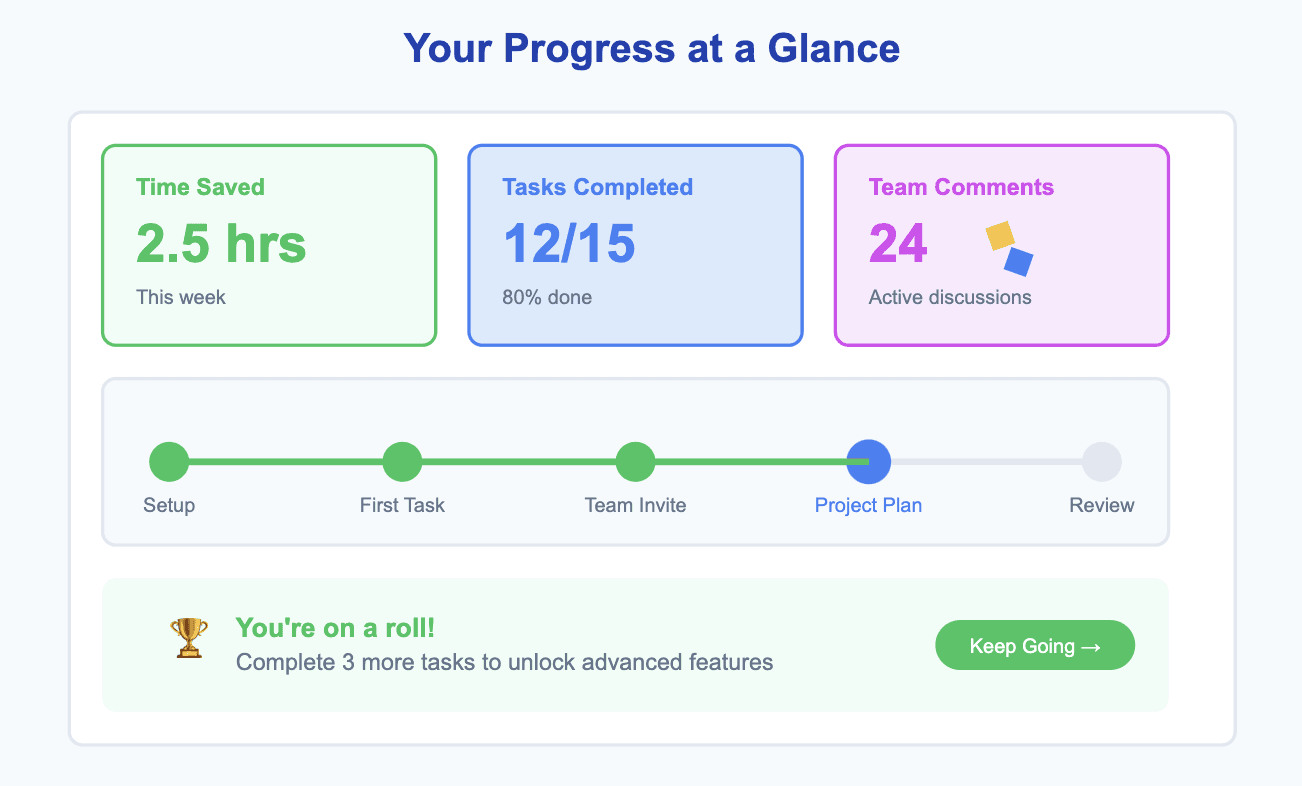
For users to stick around, they need to see the value of your product right away. If they don’t experience positive results soon, they might abandon it.
What You Should Do:
Present clear, immediate results from using your product. Show progress bars or analytics that reflect how their efforts are paying off. This reinforces the value of your product and motivates users to continue.
Pro Tip: Use notifications or emails to remind users of their progress and encourage them to take the next step. For example, "You’re halfway through your first project—keep going!" This helps users feel they’re making real progress.
7. Encourage Social Proof and Testimonials

Another way to increase user engagement during activation is by showing them how others are benefiting from your product. Social proof builds trust and can motivate users to continue exploring.
What You Should Do:
Incorporate testimonials, user stories, or case studies within the product or onboarding flow. This gives users confidence that your product can deliver on its promises.
Pro Tip: Highlight success stories that are relevant to the user’s industry or goals. This makes it more relatable and encourages them to stick around.
8. Analyze Behavior and Offer Personalization
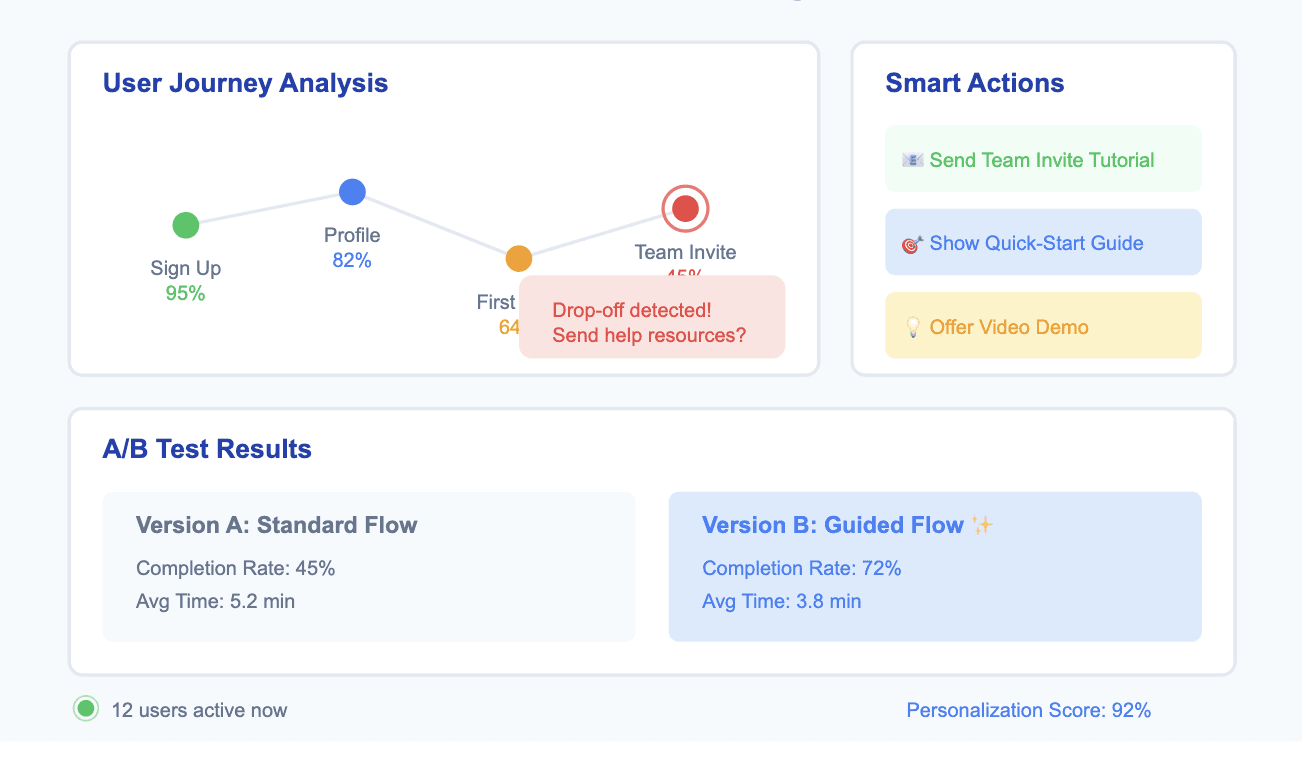
Not all users will activate in the same way. Some might need extra help, while others might be more self-sufficient. It’s essential to track user behavior and personalize the experience accordingly.
What You Should Do:
Use product analytics tools to track how users are interacting with your product. If certain users drop off early or seem confused, send them a personalized follow-up message offering additional support or guidance. Use A/B testing to see what content or features drive the most engagement.
Pro Tip: Offer personalized recommendations based on the user’s actions within the product. For example, "I see you’re using the project management tool—here’s a quick tip to get the most out of it!"
9. Request Feedback and Improve the Experience

User feedback is a critical part of the activation process. It helps you understand what users like, what challenges they face, and what features they value most.
What You Should Do:
Ask for feedback early in the activation phase, especially after users complete an important task or milestone. This can be done via in-app surveys or follow-up emails.
Pro Tip: Keep feedback requests short and focused. For example, "How was your first experience using [feature]? Let us know what we can improve!" Act on the feedback to continuously improve the user experience.
10. Nurture the Relationship After Activation
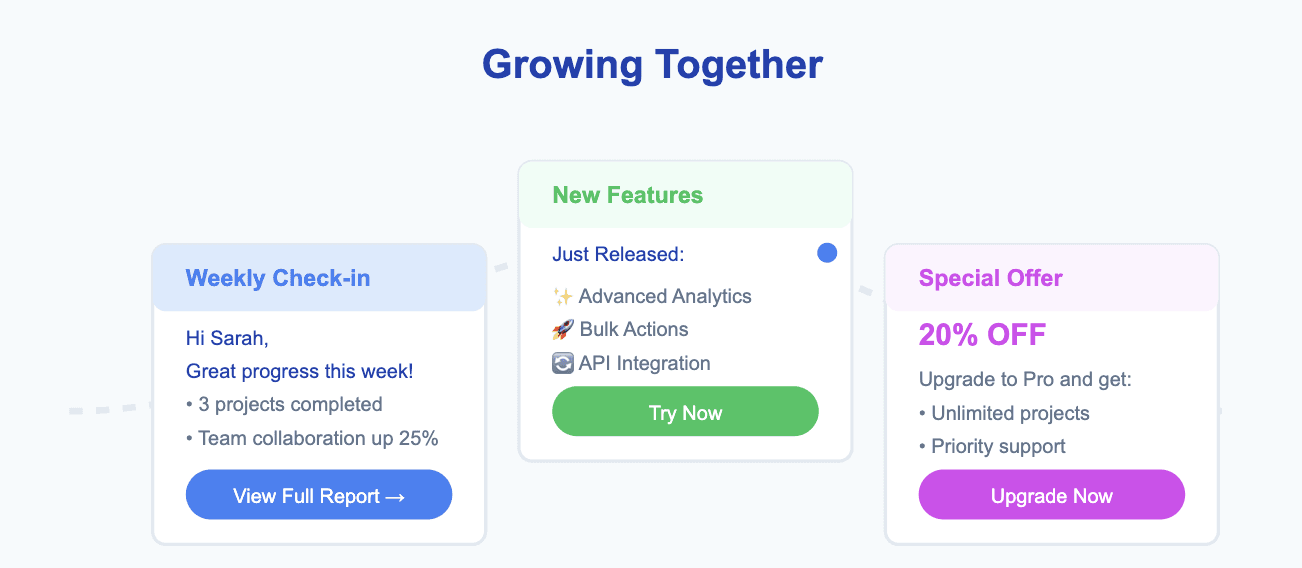
Once users are activated and engaged, don’t let the relationship end there. The next step is to nurture their engagement and lead them down the path to becoming paying customers.
What You Should Do:
Continue to engage users with targeted content, emails, or in-app messages that highlight new features, updates, or success stories. Retarget users who haven’t completed key actions or who might need a little extra push.
Pro Tip: Offer special promotions or discounts to encourage users to upgrade to a paid plan. Keep showing the value your product provides, and make it easy for them to continue growing with you.
Make Activation a Seamless Experience
The key to a successful activation funnel in SaaS is to make the process as smooth and rewarding as possible. Every step in the funnel—from the first sign-up to the ongoing nurturing of your users—needs to be clear, easy, and valuable.
By following these essential steps, you can guide users from their first interaction with your product all the way to becoming loyal, paying customers. Focus on making the activation process a seamless experience, and you'll set your users—and your business—up for success.
Now, take a moment to evaluate your own activation funnel. Are there any steps you can improve to turn your new users into active, engaged customers? By refining each stage, you’ll be on your way to building a successful SaaS business.





